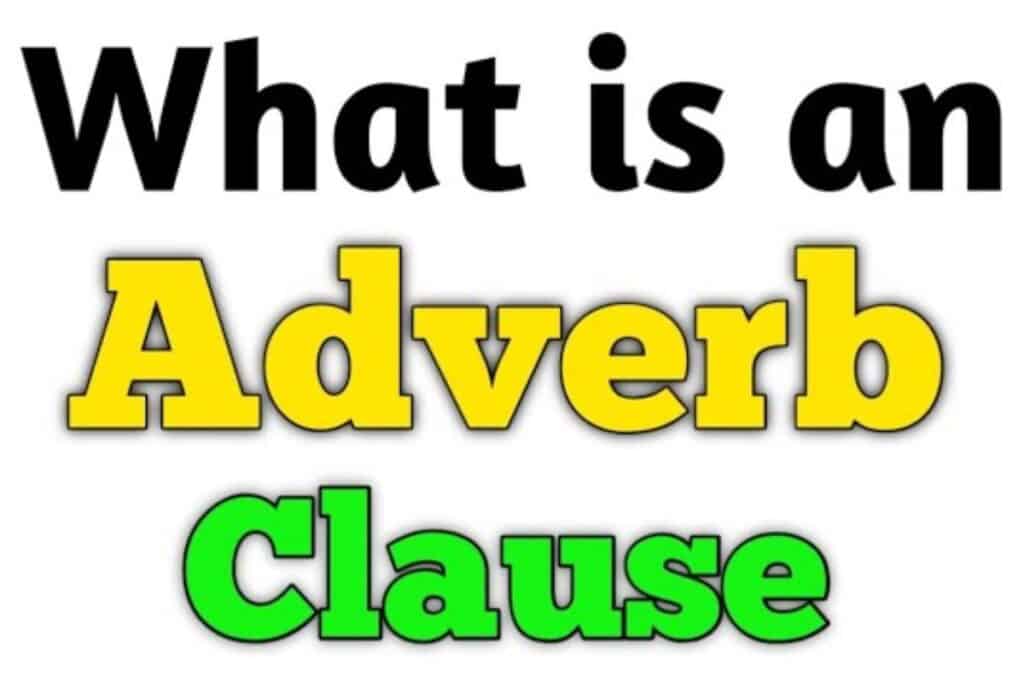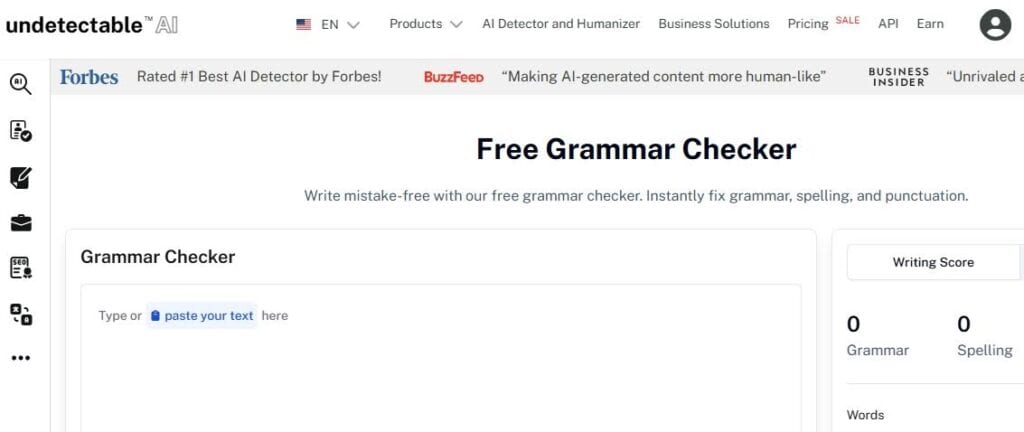Have you ever reflected on the reason why adverb clauses cannot stand by themselves?
Why should they require subordinating conjunctions?
This is because adverb clauses only give context and meaning based on the help of other verbs, adjectives, or adverbs.
Similar to adverbs, adverb clauses specify or elaborate a verb, adjective or the other adverb.
This article will teach you how to use adverb clauses and the key differences between adverb clauses and adverb phrases.
Key Takeaways
- An adverb clause is a subordinate clause that functions in a similar way to adverb.
- An adverb clause is a dependent clause which plays a similar role to an adverb.
- Adverb clauses cannot be without subordinating conjunctions.
- Adverb clauses are able to answer questions that have beginnings such as when, where, why, how, under what condition or to what extent.
- Adverb clauses may be used in the middle part of the sentence, in the initial part of the sentence, or in the concluding of the sentence.
- When an adverb clause is used in a sentence, it is usually preceded by a comma
What Is an Adverb Clause?

An adverb clause or adverbial clause is a dependent clause that acts like an adverb.
They cannot be full sentences on their own since they do not make sense without another independent sentence.
This article will help you better comprehend what an adverb clause is and provide you with adverb clause definition examples.


Never Worry About AI Detecting Your Texts Again. Undetectable AI Can Help You:
- Make your AI assisted writing appear human-like.
- Bypass all major AI detection tools with just one click.
- Use AI safely and confidently in school and work.
Key Functions and Structure
Adverb clauses form based on a particular pattern of structure which makes them easily identifiable.
Whenever an adverb clause appears, it must be preceded by a subordinating conjunction which is also the opening word to its clause, and which is also dependent on the main clause.
This simple structure is given as: Subordinating conjunction + Subject + Predicate.
The type of relationship (time, cause, condition, etc.) is determined by the subordinating conjunction and the unit subject and predicate represent a complete thought that is made complete by the main clause.
Adverb clause examples include:
- when
- while
- before
- after
- because
- since
- if
- unless
- although
- even though
- where
- wherever
- so that
- in order that
These conjunctions discuss the various forms of adverbial relationships.
They not only depend on the rest of the sentences but can also be readily moved in the sentence, making them a dynamic writing tool.
What Adverb Clauses Modify
Adverb clauses serve to qualify verbs and adjectives in a sentence, or any other adverb.
They provide additional information as to how, when, where, why, to that extent, to that degree, or to that extent, by what condition or measure an event is taking place.
Adjectives
Adverb clauses may also be used to modify adjectives, setting the context upon which the adjective is used or under what conditions the adjective is used.
- The water was so cold that we couldn’t swim. (The “that we couldn’t swim” is an adverb clause modifying the adjective “cold” by indicating the degree or extent of the coldness.)
Adverbs
Although it is less common, adverb clauses also modify other adverbs.
- She ran faster than anyone expected (The clause “than anyone expected” modifies the adverb “faster,” providing a comparison point for the speed described.)
Sentences
Adverb clauses can also modify the whole clause or sentence providing the general context to the the idea expressed.
In this variation, the adverb clause would be used to open the sentence and literally provide a stage upon which to follow along.
If you are confused about how adverbial clauses modify adjectives, adverbs or verbs, we recommend that you use our Ask AI Undetectable tool.
Our tool helps you identify if a clause is an adverbial clause or otherwise.

Types of Adverb Clauses by Function
The classification of the adverb clauses is made according to the question that the clause answers or the nature of the relationship being described.
Here are some of these adverb clauses categorised by function:
Time: Before, After, When, As Soon As
Time adverb clauses tell the time (when) something in the main clause happened.
They answer the question of time and are followed by the clauses of adverbs such as whenever, as soon as, whenever, when, whenever, by time, scarcely, when, when…no sooner…than, no sooner…than, shortly…when, times…when, when…no sooner…than, soon, when, sooner…than.
Examples of adverb subordinate clause examples include:
- When the bell rang, the students rushed out of the classroom.
- She always feels happy whenever she hears that song.
Cause or Reason: Because, Since, As
Adverb clauses of cause or reason are used to indicate the reason as to why something in the main clause was so.
They answer the why and they are presented with conjunctions such as like because, since, as, now that, inasmuch as, and for the reason that.
Here are some adverb clause examples with answers:
- We stayed indoors because it was raining heavily.
- Now that you’ve finished your work, you can relax.
Condition: If, Unless, Provided That
Another kind of adverbial clause is an adverb of condition. It means that some event will occur under the condition that some conditions will be met, or some circumstances will exist.
It is introduced by conjunctions so long as, as long as, in case, on condition that, provided that, providing that, unless, and if. Here are some examples:
- If it rains, we will cancel the picnic.
- You won’t succeed unless you work hard.
- I will lend you the book provided that you return it next week.
Contrast or Concession: Although, Even Though, Whereas
Adverb clauses of contrast or concession point to a situation when the fact which seems to refute the main idea goes followed by a sentence showing the reason why the main idea may, however, retain its position.
Some of the conjunctions include alhough, though, even though, while, whereas, even if, much as, no matter how/what/who.
Here are some examples:
- Although it was cold, she didn’t wear a coat.
- He continued working even though he was exhausted.
- Some people prefer coffee, whereas others prefer tea.
Purpose: So That, In Order That
Adverb clauses of the purpose are used to describe the purpose or the reason why the action being carried out in the main clause is carried out.
They respond to the question “Why?” or “Why do it?” and are joined by conjunctions such as so that, in order that, that, lest.
Here are some examples:
- She studies hard so that she can pass her exams.
- He wore a disguise in order that no one would recognize him.
- They saved money lest they should run into financial difficulties.
Place: Wherever, Where
Adverb clauses of place demonstrate where or whereabouts the action takes place in the main clause.
They respond to a question of “Where?” and are initiated by conjunctions such as
where, wherever, anywhere, everywhere. Below are some examples:
- You can sit wherever you like.
- I will follow you wherever you go.
- They found clues where they least expected them.
How to Use Adverb Clauses Correctly
Using adverb clauses correctly enhances the clarity, flow, and sophistication of your writing.
Here are some key guidelines to follow:
Placement
Adverb clauses can go before, in the middle or at the end of the sentence, depending on emphasis required. Its placement is normally founded on accent and continuity.
An adverb clause followed at the beginning of a sentence is always separated using a comma.
This is sometimes called a fronted adverb clause. When describing the dependent clause, no comma follows with it, especially when it comes before the main clause.
- Because it was raining, we decided to stay home (beginning)
- We decided to stay home because it was raining (end)
- My brother, although he was tired, continued to work. (Middle)
Punctuation
The comma is the most frequent of all the punctuation mark rules of the clause of adverbs. You should only use it when the adverb clause comes before the main clause.
When the independent clause precedes, no comma is used except when the adverb clause is non-defining.
- My friend, who is sick, went to school today (with a comma)
- I will go to the park if the weather is nice (without a comma)
Subordinating Conjunctions
Get to know how to join your clauses using the subordinating conjunctions.
The misuse of subordinating conjunction can change and alter your sentences altogether.
- Incorrect: He was tired, but he went to work. (The clauses are related by cause and effect, not contrast)
- Correct: Although he was tired, he went to work.”
Avoid Dangling Modifiers
Make sure that your adverb clause subject is linked to the subject of your main clause.
A hanging modifier is an incorrect structure in which the clause appears to have a different object to which it ought to belong.
- Incorrect: While walking to the store, the car almost hit me. (This indicates that the car was walking to the store.)
- Correct: While I was walking to the store, the car almost hit me.
To check misplaced modifiers and grammatical mistakes like punctuation in your adverb clauses, make use of Grammar Checker.
It will respond to your requests instantly, allow you to correct your sentences and improve their structure.

Examples of Adverb Clauses in Sentences
Let’s look at more examples to solidify your understanding of adverb clauses in various contexts:
- Time: As soon as the sun rises, the birds begin to sing.
- Cause: She couldn’t attend the meeting since she had a prior engagement.
- Condition: You will pass the exam if you study diligently.
- Contrast: Even though he was afraid, he faced his fears.
- Purpose: They arrived early so that they could get good seats.
- Place: I found my lost keys where I had left them last night.
- Manner: He spoke as if he knew everything about the subject.
- Degree: The coffee was so hot that I burned my tongue.
Common Mistakes and How to Avoid Them

Even experienced writers can make mistakes with adverb clauses.
Here are some common pitfalls and how to steer clear of them:
- Misplacing Adverbs: The most commonly used error nowadays is the misuse of adverbs. The placement of words have been designed in a manner that the adverbs they use are to indicate clearly that they attempt to modify such words or phrases.
- Incorrect: “She speaks only English”. (implies that she talks English, but does nothing)
- Correct: She only speaks English. or “She does speak English only.” (Implies that she only speaks the English language)
- Using an Adverb Clause as a Standalone Sentence (Fragment): Keep in mind that adverb clauses are a subordinate (dependent) clause. This implies that they cannot stand by themselves. They have to be linked to some main clause with a subordinating conjunction.
- Incorrect: Because I was tired. (Sentence fragment)
- Correct: Because I was tired, I went to bed early.
- Confusing Adverb Clauses and Adjective Clauses: The Adjective clause is a term used with respect to nouns or pronouns. They are relative pronouns (who/whom/whose/which/that). Adverb clauses are verbs or adjectives or other adverbs and they are initiated by any of the subordinating conjunctions.
- Adjective Clause: The student who studied hard passed the exam. (Modifies ‘student’)
- Adverb Clause: The student passed the exam because he studied hard. (Modifies ‘passed’)
Adverb Clauses vs. Adverb Phrases
The similarity between adverb clauses and phrases is that they qualify the other items in the sentence and this is the reason as to why they can be so easy to mistake one as the other.
Nevertheless, some of their major structural differences are as follows:
Definition and Structural Differences
As we have seen, an adverb clause is a dependent clause, which has a subject and a predicate, and starts with a subordinating conjunction.
An adverb phrase, on the other hand, is a collection of words that have the same function as an adverb but no subject-predicate operation.
It is usually a prepositional phrase, an infinitive phrase or a participial phrase.
Here are some examples:
- When the sun sets, the sky turns orange. (Adverb Clause)
- He ran to catch the bus (Adverb Phrase)
How to Know Which One You’re Using
The easiest way to tell the position of the difference between an adverb clause or a phrase is the availability of a subject, a predicate and a subordinate conjunction.
If it has both a subordinating conjunction and a sentence pattern, then it is an adverb clause.
However, when it is used as an adverb (with no subject-predicate form), it is an adverb phrase.
Built for writers, students, and businesses—explore our reliable detection and humanization tools.
FAQs About Adverb Clauses
Can a Sentence Start with an Adverb Clause?
Yes, it can.
In fact, beginning a sentence with an adverb clause is a very good method of sentence variations and use of adverb clause form to give rest or emphasis to the material contained in the adverb clause.
Do You Always Need a Comma After One?
No, the rule of a comma is not applicable in the adverb clauses but rather, whatever the location of that comma in the sentence.
A comma should be used in front of an adverb clause provided the clause is stated at the first position in sentence.
How Long Can an Adverb Clause Be?
An adverb clause has no strict limit in length. It may be a somewhat lengthy one made up of only several words, or it may be very complex, having several phrases and modifiers in it.
The trick is that it should include the subject and a predicate and start with a subordinating conjunction.
Final Thoughts
Adverb clauses are a useful and very effective grammatical construction that can provide depth, context and elaboration to your writing.
With Undetectable AI, you will be able to create complex, grammatically perfect pieces of writing, where the advanced elements of speech in the form of adverb clauses will be effortlessly integrated without any traces.
Give it a go and start delivering outstanding content now.
Let Undetectable AI help you write smarter, not harder.
